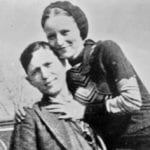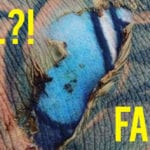 Technology
Technology  Technology
Technology  Humans
Humans 10 Everyday Human Behaviors That Are Actually Survival Instincts
 Animals
Animals 10 Animals That Humiliated and Harmed Historical Leaders
 History
History 10 Most Influential Protests in Modern History
 Creepy
Creepy 10 More Representations of Death from Myth, Legend, and Folktale
 Technology
Technology 10 Scientific Breakthroughs of 2025 That’ll Change Everything
 Our World
Our World 10 Ways Icelandic Culture Makes Other Countries Look Boring
 Misconceptions
Misconceptions 10 Common Misconceptions About the Victorian Era
 Mysteries
Mysteries 10 Strange Unexplained Mysteries of 2025
 Miscellaneous
Miscellaneous 10 of History’s Most Bell-Ringing Finishing Moves
 Technology
Technology Top 10 Everyday Tech Buzzwords That Hide a Darker Past
 Humans
Humans 10 Everyday Human Behaviors That Are Actually Survival Instincts
 Animals
Animals 10 Animals That Humiliated and Harmed Historical Leaders
Who's Behind Listverse?

Jamie Frater
Head Editor
Jamie founded Listverse due to an insatiable desire to share fascinating, obscure, and bizarre facts. He has been a guest speaker on numerous national radio and television stations and is a five time published author.
More About Us History
History 10 Most Influential Protests in Modern History
 Creepy
Creepy 10 More Representations of Death from Myth, Legend, and Folktale
 Technology
Technology 10 Scientific Breakthroughs of 2025 That’ll Change Everything
 Our World
Our World 10 Ways Icelandic Culture Makes Other Countries Look Boring
 Misconceptions
Misconceptions 10 Common Misconceptions About the Victorian Era
 Mysteries
Mysteries 10 Strange Unexplained Mysteries of 2025
 Miscellaneous
Miscellaneous 10 of History’s Most Bell-Ringing Finishing Moves
10 Horrifying Little-known “Mindhunter” Cases
FBI Special Agent John Douglas is the man known as “Mindhunter.” The nickname originates from the 1995 book that he wrote alongside Mark Olshaker. The book profiles Douglas’s creation of the FBI’s Investigative Support Unit, formerly known as the Bureau’s Behavioral Science unit. Douglas and fellow agent Robert “Bob” Ressler interviewed hundreds of killers in order to invent the process known as criminal profiling.
See Also: 10 Murderers Who Did Not Kill Anybody
As dramatically shown on the Netflix series “Mindhunter,” Douglas and other agents dealt with such infamous serial killers as Edmund Kemper, Jerry Brudos, David Carpenter, Robert Hansen, and Wayne D. Williams. Douglas even talked with Charles Manson, the man once widely seen as America’s most infamous inmate.
Besides these high-profile cases, “Mindhunter” the book also dives deep into lesser known crimes and criminals, all of whom Douglas interacted with or chased in one form of another. The following list details and describes some of the more overlooked horrors of Douglas’s groundbreaking autobiography.
10 The Murder of Betty Jean Shade
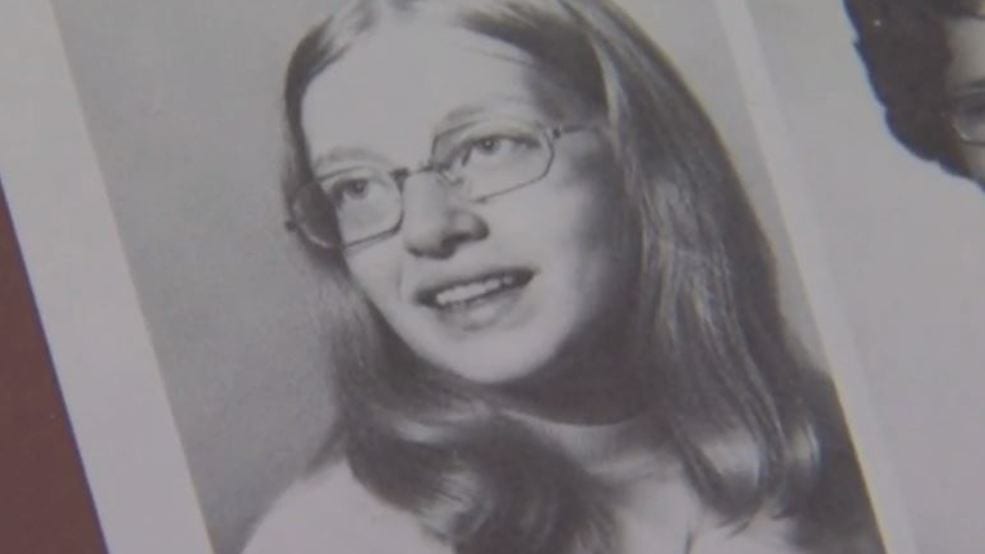
The 1979 slaying of 22-year-old Betty Jean (Douglas’s book says “Jane”) Shade is depicted in the fifth episode of the first season of “Mindhunter.” Here’s the real story: On the last night of her life, Shade got into a serious argument with her live-in boyfriend, Charles “Butch” Soult, Jr. Despite this, and despite Shade’s determination to break things off with Butch, she still decided to ride in the same car with Butch, his brother Michael, and their sister Catherine. The foursome went to Wopsononock Mountain near the city of Altoona, Pennsylvania.
Hours later, Logan Township police officers Steven D. Jackson and Walter Coho were dispatched to Skyline Drive near the mountain. A local jogger had found the mutilated body of a white female. The body belonged to Shade. Lead investigator Detective Howard Horton, along with Robert Long, Edward G. Pottmeyer, and Barry Bidelspach, were quick to zero in on Butch as the prime suspect. Douglas concurred with this view. Ultimately, Douglas and the Logan Township officers learned that Butch and Mike Soult had raped and murdered Shade. Mike not only sexually assaulted Shade, but helped his brother dispose of her body. Butch killed and mutilated Shade. Catherine Soult helped her brothers to transport the corpse.
The case of Betty Jean Shade was one of Douglas’s early attempts at a criminal profile. He correctly deduced that Shade’s killer was someone from a broken family with a domineering mother. Douglas also correctly predicted that Shade’s killer would be “inept with women”. This matched Butch to a T, as he mutilated his former girlfriend after failing to have sexual intercourse with her prior to her death.
9George Russell Jr.
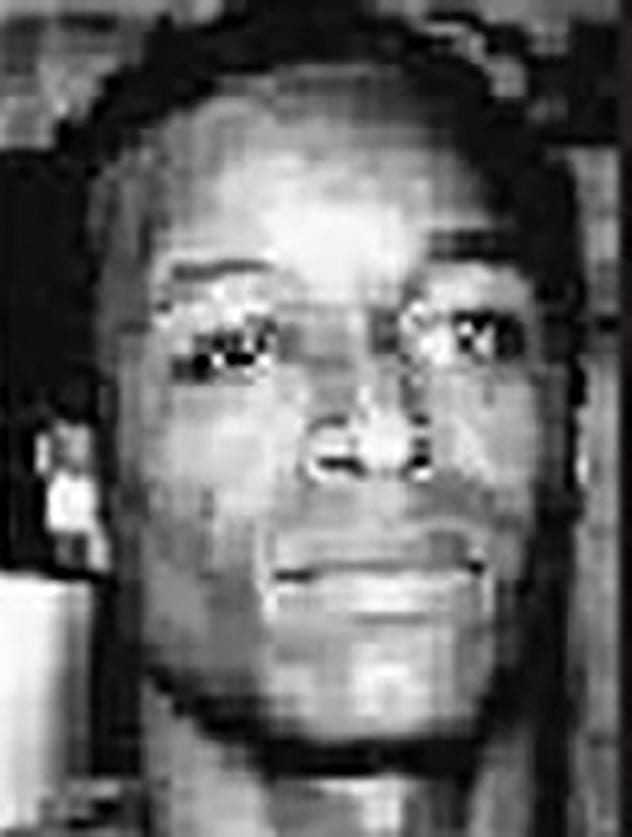
George Russell Jr. was one of the first murderers to complicate Douglas’s thinking concerning cross-racial sex crimes. Prior to 1991, Douglas and the majority of the American law enforcement community operated under the assumption that lust murderers targeted victims of the same race, i.e. white attackers target white victims or black attackers target black victims. Russell changed the game.
Between 1990 and 1991, Russell, a handsome black male in his thirties, bludgeoned and strangled to death three white women named Mary Anne Pohlreich, Andrea Levine, and Carol Marie Beethe. According to the residents of Mercer Island, Washington, Russell was charming and dated many different women of different races. Even though he had a history of petty theft, Mercer Island police officers had a hard time believing that he was capable of such heinous murders.
The 27-year-old Pohlreich spent her last night drinking and dancing with friends at Papagayo’s bar on June 22, 1990. Hours later she was found beaten to death in her bed by someone using what Douglas calls a “blitz-type” attack style. A similar fate befell the 35-year-old Beethe and 24-year-old Levine. As Douglas writes in “Mindhunter, Russell’s method of overwhelming his victims with speed and violence was not unique. Rather, what made Russell unusual was the amount of post-mortem posing that he did with his victims. For instance, one of the women was left in her bed with a pillow over her head and a rifle inserted in her vagina. The final victim was put in an even more humiliating position, indicating to Douglas that Russell had a deep-seated hatred of women and felt compelled to degrade them.
8 The Murder of Francine Elveson
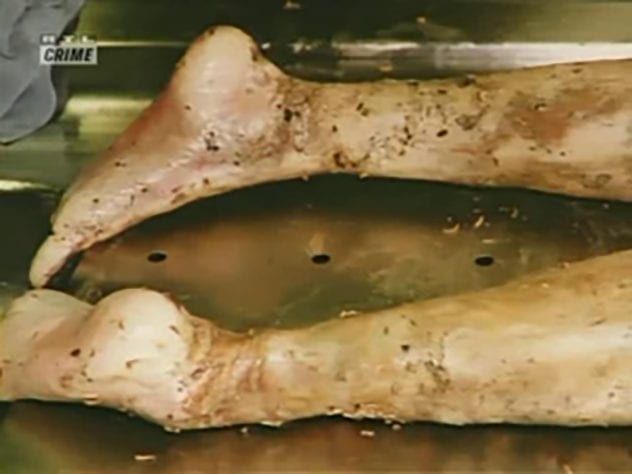
Francine Elveson was a petite woman—90 pounds and only five feet tall. She was also quiet and shy and suffered from a case of kyphoscoliosis (a curvature of the spine). The 26-year-old spent her days teaching handicapped children, while her nights were spent with her parents inside of their Pelham Parkway apartment in The Bronx.
In October 1979, a young resident of Elveson’s apartment building found her wallet in the stairwell connecting the third and fourth floors. Upon returning the wallet to the Elveson family, it was learned that Francine had failed to show up for work that day. Afraid that something had happened to her daughter, Mrs. Elveson and some of her neighbors searched the apartment building for Francine. They found her at the top of the stairs leading to the roof. Francine was found naked and badly bruised. In fact, Francine’s killer had managed to fracture her jaw, nose, and cheeks. The killer had also strangled Elveson with her own belt and nylon stockings. Other grotesque acts included biting the Elveson’s thighs, removing her nipples, inserting various objects into her vagina, and leaving behind excrement at the crime scene.
Douglas’s profile figured that Elveson’s killer was someone who knew the apartment building well and lived in the area. Douglas also predicted that the killer would have a history of mental illness, would be unemployed or intermittently employed, and a military reject. All of these described Carmine Calabro, the man charged with Elveson’s murder many months after her body was found. Calabro, who pled not guilty by reason of insanity at his trial, was ultimately convicted of the murder thanks to dental forensics, which matched his teeth with the bite marks on Elveson’s body.
7Carl Stephen Mosely
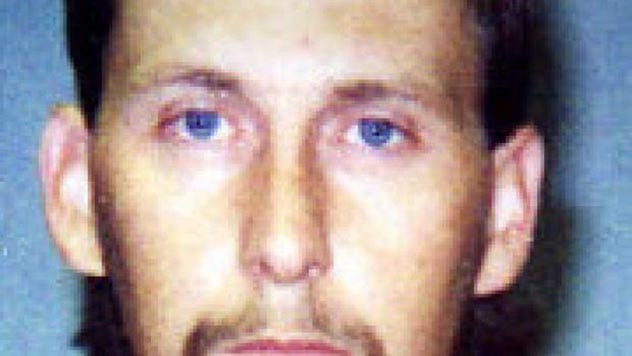
Carl Stephen Mosely, who Douglas calls “Gregory Mosely” in “Mindhunter,” preyed on vulnerable women. His first victim, 35-year-old Dorothy Louise Woods-Johnson, was a widow who wanted to make friends. On a Friday night in April 1991, Dorothy went to the SRO Country Club in Winston-Salem, North Carolina. It was there that she met the handsome Mosely. The following day, April 13, 1991, Dorothy’s body was found outside of a housing development. The medical examiner found not only multiple stab wounds on Dorothy’s body, but also found signs of strangulation as well as bruising on Dorothy’s face and throat.
The next victim, 38-year-old Deborah Jane Henley, spent her last night alive at the SRO Country Club too. When Deborah failed to come home that night, her parents called the sheriff. That same day, a farmer found Deborah’s nude body in a cornfield. Like Dorothy, Deborah’s body contained bruises, particularly on the throat and face. Both cases were broke wide open thanks to an anonymous tip, which claimed that Carl Mosely had borrowed a friend’s car on the night of Deborah Henley’s murder. It did not take police long to discover that Mosely had a prior conviction: In 1989, Mosely had abducted and sexually assaulted Laura Fletcher, thus earning convictions for assault with a deadly weapon and second-degree rape.
Two of Douglas’s students, Larry Ankrom and Greg Cooper, profiled Mosely as a sexual sadist with an “inadequate personality.” Furthermore, the FBI agents saw Mosely as obsessed with control and cruelty. After all, Mosely not only mutilated his victims before killing them, but he had also stabbed both women twelve times each on top of penetrating them vaginally and anally.
6Larry Gene Bell
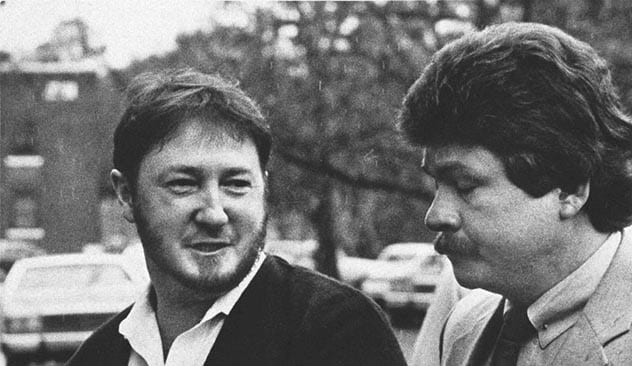
Larry Gene Bell was a soft-spoken killer who enjoyed taunting his victims. Bell was so vile that Douglas devotes an entire chapter to his crimes in “Mindhunter.” During the summer of 1985, Bell was the man who struck fear in the hearts of South Carolinians, especially those with blonde daughters.
At approximately 3:38 p.m. on May 31, 1985, high school senior Shari Faye Smith went missing. After her father, Robert, found Shari Faye’s car setting in the family’s driveway with the engine running, he alerted the Lexington County Sheriff’s Department. This would set off the largest manhunt in the history of Columbia, South Carolina—a manhunt that would become a kidnapping case when Shari Faye’s abductor called the Smith family and told them: “Shari Faye was kidnapped from her mailbox with a gun. She had the fear of God in her”.
These taunting phone calls would continue. One of these phone calls led Sheriff Jim Metts to Shari Faye’s body, which was found eighteen miles away from her home in Saluda County. The level of decomposition made it impossible to determine the cause of death, but the medical examiner did conclude that Shari Faye had expired on the same day that she was kidnapped.
After Shari Faye, another victim, 9-year-old Debra May Helmick, was abducted near her family’s trailer located at Old Percival Road in Richland County, South Carolina. Helmick was murdered almost immediately, and the killer called the Smith family again and told them where to find Helmick’s body. Douglas, other members of the FBI, and Sheriff Metts encouraged Dawn Smith, Shari Faye’s sister, to keep talking to the killer every time he called. Eventually the phone number was traced to Huntsville, Alabama, and from there cross-checked with a phone belonging to the Sheppard residence, which was fifteen miles from the Smith family home. The Sheppards were ruled out, but not Larry Gene Bell, their house sitter.
Before Bell’s discovery, Douglas believed that Shari Faye’s killer would be a white male in his late twenties to early thirties. He also believed that the killer had married early in life before getting a divorce. The killer lived with his parents, had been discharged after a brief stint in the military, and was a porn addict. Larry Gene Bell was a divorced loner who did odd construction jobs. He spent less than a year in the Marines before being discharged due to a knee injury, and the first search of his room in the Sheppard home uncovered a “Hustler” magazine.
Bell never confessed to the murders. He died in the electric chair on October 4, 1996. Bell is still considered one of the primary suspects in the 1984 disappearance of Sandee Elaine Cornett, the girlfriend of one of his co-workers, and the July 1975 disappearance of Denise Newsom Porch, who was last seen at an apartment complex not far from where Bell lived at the time.
5 James R. Odom & James C. Lawson
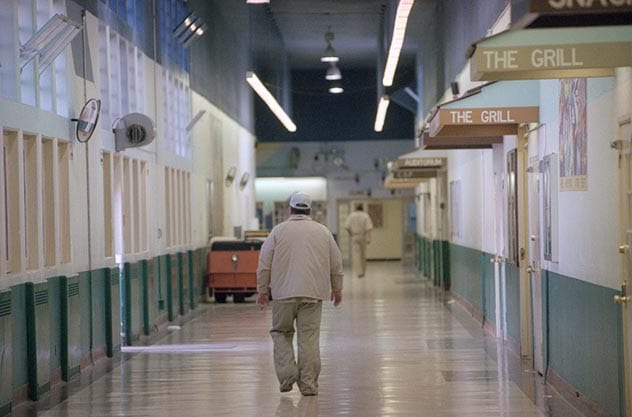
James Russell Odom and James Clayton Lawson met in a mental ward in the mid-1970s. Both were serving time for rape at California’s Atascadero State Mental Hospital. Lawson and Odom passed the time by talking about their future plans. Lawson wanted to kidnap women, cut off their breasts, cut out their ovaries, and stick knives into their vaginas. Lawson wanted to do everything to his female victims except have sex with them. For Odom, the only crime he cared about was rape.
Not long after both men were released back into the civilian world, they hopped into the 1974 Ford Comet belonging to Lawson’s father. Days later, on August 29, 1975, the nude body of a 25-year-old mother of two was found near Columbia, South Carolina. Both of the victim’s breasts had been removed. Her genitals had also been removed as well, while evidence at the scene indicated that the woman’s killers had eaten part of her flesh.
The case of Odom and Lawson, which ended in 1976 with Odom receiving life plus forty years and Lawson dying in the electric chair on May 18, 1976, became one of the foundational case studies for Douglas. In a 1980 article penned by Douglas and Robert Hazelwood, the case of Odom and Lawson was used to describe how sexual fantasies influence lust murderers.
4 Joseph Christopher
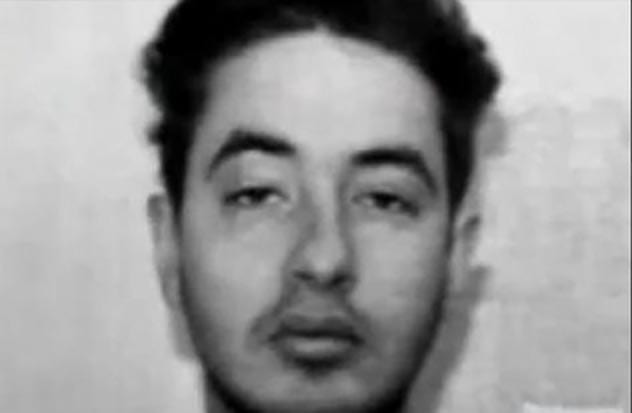
On September 22, 1980, 14-year-old Glenn Dunn was found dead in a supermarket parking lot. A day later, 32-year-old Harold Green was shot while eating at a fast food restaurant. Later that same day, 30-year-old Emmanuel Thomas was shot to death outside of his own home. On September 24th, another victim, Joseph McCoy, was shot to death not far from Niagara Falls.
Because of the weapon used, the murderer of these men became known as the .22-Caliber Killer. Eyewitnesses who saw some of the shootings described the assailant as a young white male. This fact led Douglas to believe that the murders were conducted by a “mission-oriented, assassin-style” killer who was motivated by racism (all of the victims were black males). Douglas’s profile was given added ammunition when, on October 9th, a man matching the description of the killer entered a Buffalo, New York hospital and attacked 37-year-old patient Collin Cole. The assailant screamed “I hate niggers” before running away. After months of investigation, the .22-Caliber Killer was unmasked as 25-year-old Joseph Christopher, a private in the US Army.
Douglas and other investigators also proved that Christopher was the man known as the “Midtown Slasher,” an assailant who stabbed four black men and one Hispanic man to death in downtown Manhattan over a thirteen-hour period on December 22, 1980. Prior to Christopher’s capture, Douglas had predicted that the .22-Caliber Killer would be a serviceman who was rational and well-organized, and yet unable to live under Army discipline. This description applied to Christopher, who carried out the murders while on leave from Fort Benning.
3 William Henry Hance
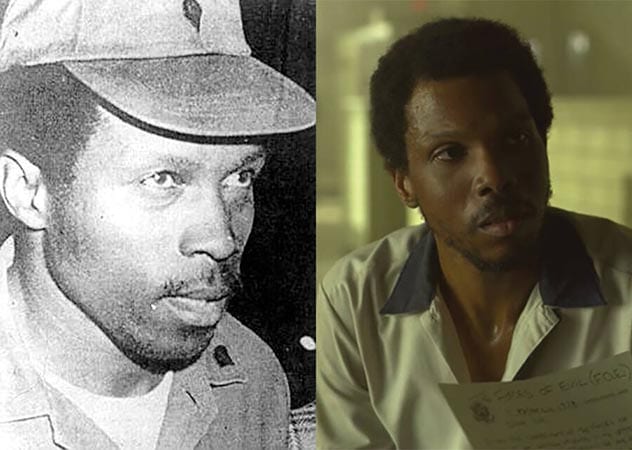
Serial killer William Hance is featured in the third episode of the second season of “Mindhunter.” In real life, Hance was known to the terrified people of Georgia as the Stocking Strangler. Although convicted on solid evidence, Hance’s 1994 execution has been labeled as a “legal lynching” by some advocates because of Hance’s diminished mental capacity.
Beginning in 1978, the Stocking Strangler attacked and strangled six elderly women after breaking into their homes, all of which were either in or near the city of Columbus, Georgia. All six victims were white, and the limited forensic evidence found at the crime scenes suggested that the killer was black. Around the same time, the Columbus police received a letter on US Army stationary signed by seven people calling themselves the “Forces of Evil.” The letter claimed that because the Stocking Strangler was a black male, they would kill a black woman in retaliation. The letter also claimed that a black prostitute named Gail Jackson had already be abducted and killed by the group.
Douglas, who was already working a major serial killer case in Atlanta, believed that the “Forces of Evil” was a deflection written by the real killer, aka the Stocking Strangler. Fellow FBI profiler Robert Ressler, himself a former Army MP, believed that the killer was a black male and an enlisted soldier stationed at Fort Benning. Ressler believed that the killer was either in the artillery or the military police.
After the FBI criminal profile made its way around Fort Benning, 26-year-old Specialist William Hance, who was a member of an artillery unit, was arrested. He confessed to the murders of Gail Jackson, Irene Thirkield, and Army private Karen Hickman, who had been found dead at Fort Benning in 1977.
A year before “Mindhunter” was published, Hance’s name made the national news because of several accusations of racism. Specifically, multiple jurors who had participated in Hance’s second sentencing claimed that racial epithets had been used by other jurors towards Nance and the lone black member of the jury. However, despite these accusations and despite the fact that Hance’s IQ was once tested at 76 (thereby making him borderline disabled), his execution went ahead.
2Wayne Nance
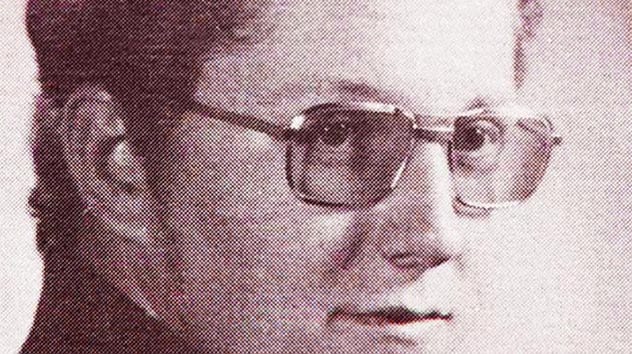
Doug and Kris Wells, who became friends with Douglas, have the distinction of being some of the few people to ever go from serial killer victims to serial killer killers. This strange turn of events occurred on September 3, 1986.
After arriving home sometime after midnight, Doug and Kris Wells found an unknown pickup truck parked outside of their Missoula, Montana home. Doug found that the truck was occupied by a sleeping man. Minutes later, that same man asked Doug for a flashlight. Before Doug could retrieve the flashlight, the man pulled out a gun and ordered Kris to tie up Doug. The man then separated the two. Kris was taken to a bedroom in the house, while Doug was brought to the basement, tied to a pole, and beaten and stabbed with an 8-inch knife. Incredibly, Doug managed to free himself. He grabbed a loaded rifle and made his way upstairs. He shot the assailant once, but did not kill him. When the man fought back, Doug struck him several times in the head. Then, after the assailant fired three rounds from his .22-caliber pistol (one round hit Doug in the leg), Doug seized the pistol and shot the intruder in the head. The man would die in St. Patrick’s Hospital the next day.
The intruder turned out to be Wayne Nance, a native son of Missoula who was born in 1955. Nance knew Kris Wells because she was the store manager at Conlin’s Furniture, the same store that he worked at as a delivery driver. Nance became infatuated with Kris and may have decided on killing her during one working day.
In the years since the attack on the Wells family and the publication of “Mindhunter,” Douglas and Montana police officials have asserted time and time again that Nance was more than likely a serial killer responsible for more than five deaths between 1974 and 1986. Some of Nance’s suspected and confirmed victims include Donna Pounds (1974), Devonna Nelson (1980), Marcella Cheri “Marci” Bachmann (1984), the unidentified woman known as “Christy Crystal Creek” (1985), and the murders of Michael and Teresa Shook (1985).
1 Steven Brian Pennell
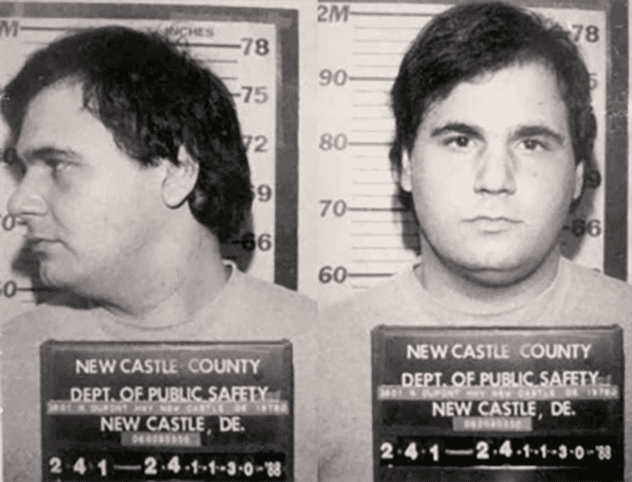
Delaware is not known for much besides being America’s “First State” (Delaware was the first state to ratify the US Constitution). But Delaware made the news for all the wrong reasons between 1987 and 1988.
During that time, a serial killer regularly traveled US Route 40 in New Castle County, Delaware in order to abduct and murder women. The first body discovered was that of ex-prostitute Shirley Anne Ellis, 23, who was found partially nude and bound with black tape. Ellis’s killer had hit her several times in the head with a hammer and had tortured her with work tools before strangling her. After Ellis, several more women either went missing or were found dead. These women included 32-year-old Catherine A. DiMauro, 22-year-old Michele A. Gordon, 26-year-old Kathleen Anne Meyer, and 27-year-old Margaret Lynn Finner.
After being called in to consult on the case, Douglas profiled the killer as a white male with a wife and kids. He was also a blue-collar worker who knew how to use tools. Douglas also predicted that the killer knew Route 40 well, and would hunt the area nightly with a “rape kit” prepared in his work van. 31-year-old Seven Brian Pennell, an electrician and a married father, was the man that police were looking for. The Delaware native enjoyed dominating women and fit Douglas’s profile of “macho” man archetype.
Pennell, Delaware’s only recorded serial killer, died via lethal injection on March 14, 1992.
For more lists like this, check out 10 Incredibly Tragic Unsolved Child Murders, and 10 Terrifying Serial Killers You’ve Never Heard Of—But Should Have.







